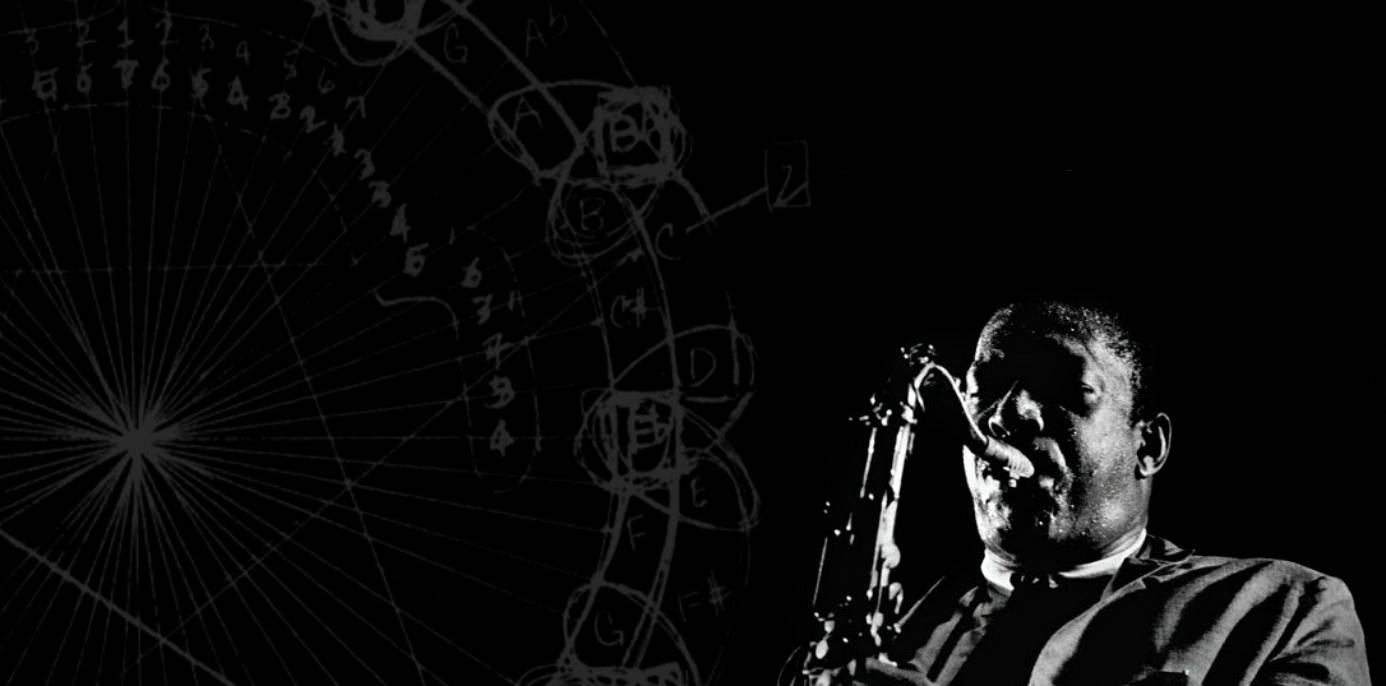John Coltrane’s Drawing of the Mathematical Soul of Music
The saxophonist and composer explains, in a geometric drawing, that intimate connection between music and mathematics.
In the last verse of his “Other Poem of the Gifts,” Jorge Luis Borges thanked the “divine labyrinth of effects and causes” for “music, the mysterious form of time.” To this idea, we might add that music also exists as a sublimated expression of mathematics and geometry. This, the saxophonist and composer John Coltrane once affirmed with his own drawing.
The visual experiment is believed to have been created by Coltrane during a period when he undertook an in-depth study of Indian music along with a study of some of the theories of Albert Einstein. The circle, which may be said to resemble a clock, incorporates some of Coltrane’s theoretical innovations into a well-known musical scheme. The drawing was presented in 1967 to fellow saxophonist and professor, Yusef Lateef, Coltrane’s colleague and tutor. Lateef always perceived a kind of spiritual path in Coltrane’s music.

Known as “The Coltrane Circle” or “Coltrane’s Circle of Tones,” the diagram is based on the circle of fifths which, in musical theory, is a geometric representation of the relationships between the 12 semitones of the chromatic scale, their notations (flat or sharp), and their relative shades. The outer ring portrays the hexatonic or whole-tone scale of the note Do, and the inner ring portrays the hexatonic scale of Si. The series of terms and structures is easily understood by those who’ve studied musical theory. For those of us who haven’t, the graphic is a beautiful enigma, visually and intuitively explaining the relationship between music and mathematics.
Despite the depth of his study, Coltrane spoke very little on musical theory. His knowledge in the field is reflected rather more in his legendary compositions. For this very reason, Coltrane’s circle is a rare, valuable and surprisingly beautiful work. A five-pointed star drawn in union with all the Do notes of the scale.
Perhaps every musical composer is, in one way or another, also a mathematician. Coltrane’s circle, a symmetrical code or a mandala adorned with numbers and letters, expresses precisely what is, at once, both paradoxical and obvious.
*Images: 1) remix from the album cover Settin’ The Peace / Creative Commons; 2) Creative Commons
Related Articles
Pictorial spiritism (a woman's drawings guided by a spirit)
There are numerous examples in the history of self-taught artists which suggest an interrogation of that which we take for granted within the universe of art. Such was the case with figures like
Astounding fairytale illustrations from Japan
Fairy tales tribal stories— are more than childish tales. Such fictions, the characters of which inhabit our earliest memories, aren’t just literary works with an aesthetic and pleasant purpose. They
A cinematic poem and an ode to water: its rhythms, shapes and textures
Here lies One Whose Name was writ in Water. - John Keats Without water the equation of life, at least life as we know it, would be impossible. A growing hypothesis holds that water, including the
Watch beauty unfold through science in this "ode to a flower" (video)
The study of the microscopic is one of the richest, most aesthetic methods of understanding the world. Lucky is the scientist who, upon seeing something beautiful, is able to see all of the tiny
To invent those we love or to see them as they are? Love in two of the movies' favorite scenes
So much has been said already, of “love” that it’s difficult to add anything, much less something new. It’s possible, though, perhaps because even if you try to pass through the sieve of all our
This app allows you to find and preserve ancient typographies
Most people, even those who are far removed from the world of design, are familiar with some type of typography and its ability to transform any text, help out dyslexics or stretch an eight page paper
The secrets of the mind-body connection
For decades medical research has recognized the existence of the placebo effect — in which the assumption that a medication will help produces actual physical improvements. In addition to this, a
The sea as infinite laboratory
Much of our thinking on the shape of the world and the universe derives from the way scientists and artists have approached these topics over time. Our fascination with the mysteries of the
Sharing and collaborating - natural movements of the creative being
We might sometimes think that artistic or creative activity is, in essence, individualistic. The Genesis of Judeo-Christian tradition portrays a God whose decision to create the world is as vehement
John Malkovich becomes David Lynch (and other characters)
John Malkovich and David Lynch are, respectively, the actor and film director who’ve implicitly or explicitly addressed the issues of identity and its porous barriers through numerous projects. Now










